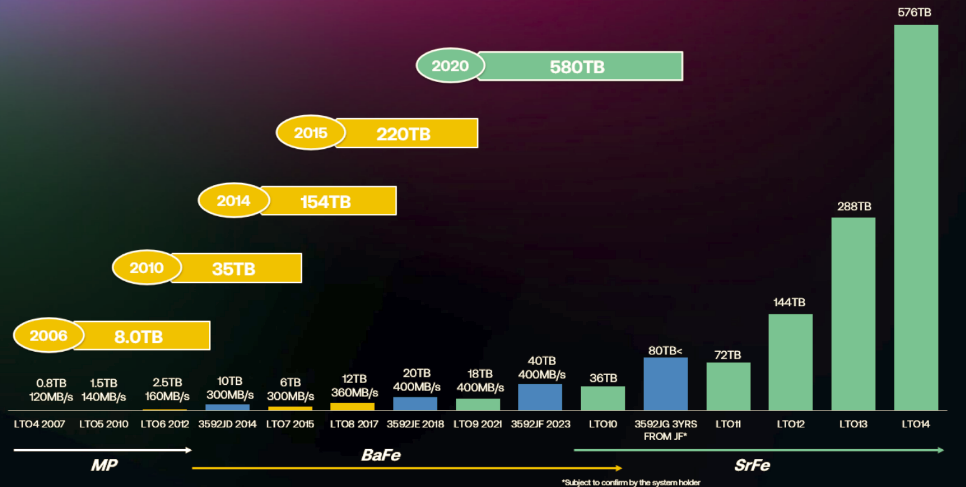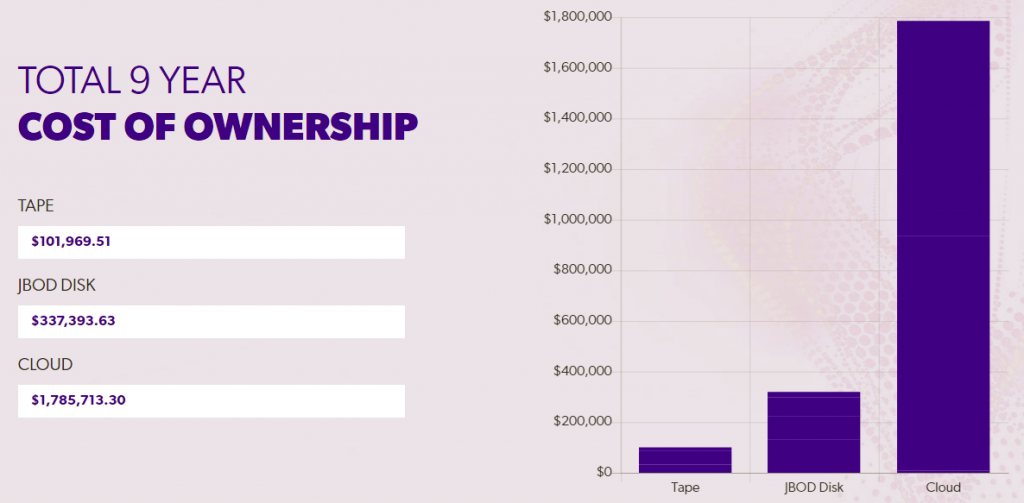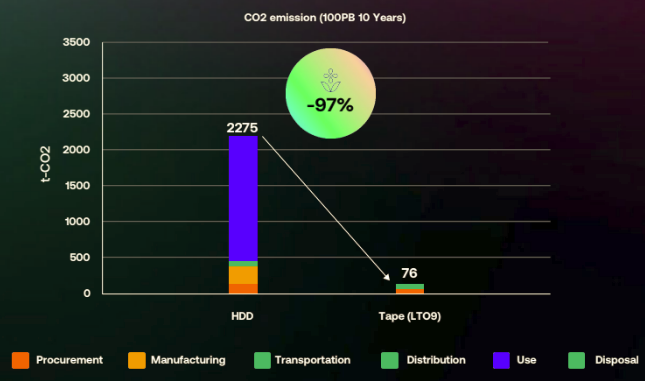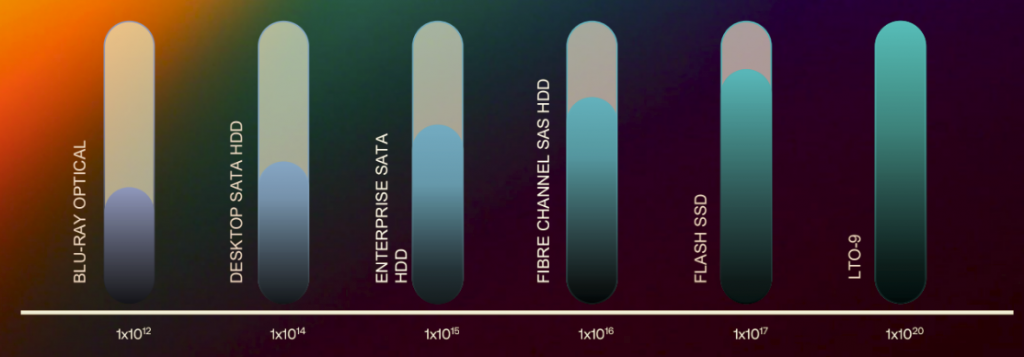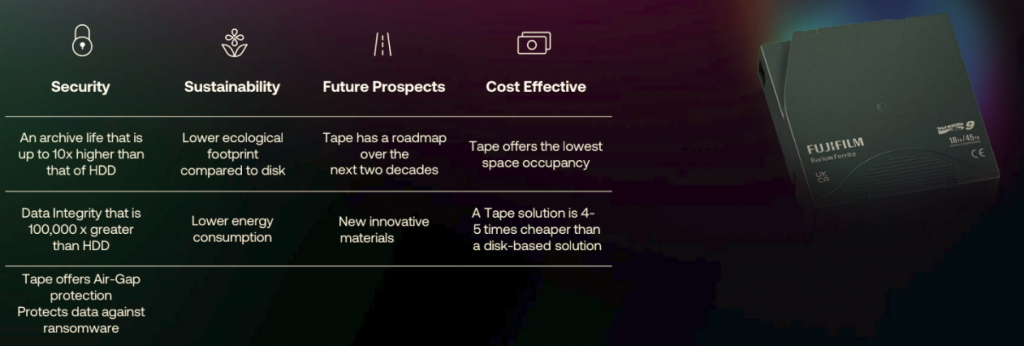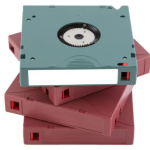More than 10 years ago, I wrote a blog post with the question is backup to tape dead? The answer was no, but what about tapes usage now, on 2024?
Data has grow and the demand of solution to manage cold data also. For this reason there is a high investment in cold data storage solution and tape is still relevant also today!
The tape technology is moving fast and with a good roadmap for future grow:
Of course disks are growing faster in term of capacity… but what about costs? Tape is the most cost-effective storage solution for cold data.
The LTO consortium has build a pretty nice TCO calculator that can give interesting results.
For example, for a beginning capacity of 2TB, with 5% average yearly data growth, 0.12$ Per kilowatt-hour energy cost, an LTO9 solution will be cheaper than a 16 HDD solution of a S3 Glacier solution:
But there are also other importan aspects. For example the sustainability. Tape is recognised as Eco-Friendly storage.
Because there is no need to have tape constantly powered on during data storage, tape mitigates the amount of CO2 emissions generated during its lifecycle by 97% when compared with hard disk drives.
And what about security threats? Tape media can be stored offline; therefore an air-gap is present between online storage and tape. Any traditional attack by viruses, ransomware or hacking are impossible to offline tape media (I don’t want to spoiler what happens in season 1 of Mr. Robot… but there are non traditional way to attack offline tapes).
And what about relieability? Tape’s Bit Error Rate (BER) is four orders of magnitude better than disk making it the most dependable storage available But of course it also depends by the backup or the archiving solution.
For example the usage of a self describing and a open format are really important to permit restore with no need to install specific software. Another crucial aspect is how manage the technology refresh: LTO can read from two version old and can write one version old… But when a tape drive is changed and become no more compatible with old tapes? A migration may be needed!
To recap, I will use this good FUJIFILM summary on why tapes are still relevant… also today!
Of course, there are also some cons. Tapes are weaks in some aspects:
- Performance: sequential write & read are very good (considering also that most tape can do encryption and compression in hardware), but random I/O are terrible and tape lookup can take ages (if tapes are offline)… A global catalog with key metadata should be stored on disk to permit search and fast recovery.
- File/Object access: tapes are not disks… also if LTFS promise a transparent file access, the different implementations make this solution not so widly adopted. Most companies build their file/object gateway and S3 access is becoming much more common.
- Media endurance: endurance is good, but tapes cannot be used too much times, so proper rotation policy (and maybe also data migration as discussed previously) may be needed.
- Tape cleaning and media retention: tapes need some specific cares to guarantee their endurance.

